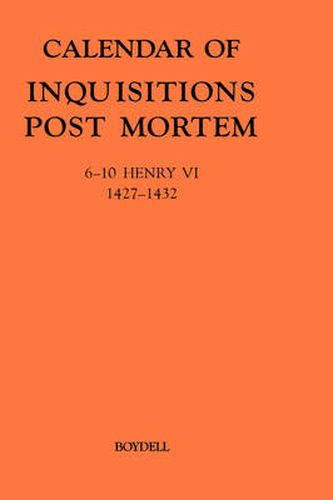Readings Newsletter
Become a Readings Member to make your shopping experience even easier.
Sign in or sign up for free!
You’re not far away from qualifying for FREE standard shipping within Australia
You’ve qualified for FREE standard shipping within Australia
The cart is loading…






This is the second volume in a new series designed to cover the previously-neglected inquisitions post mortem\ of the fifteenth century between 1422 and 1485. Inquisitions post mortem were compiled with the help of jurors from the area, as a county-by-county record of a deceased individual’s land-holdings and associated rights, where the individual held land directly of the crown. It is this explicit connection with land and locality - in terms economic, social, political, and topographical - that makes these documents of comprehensive interest to a broad range of historians and archaeologists. The inclusion of jurors’ names and full manorial extents is standard in the new series as is the calendaring of information offered by the associated writs. Analogous documents consist of proofs of age, of particular interest to historians of memory, and assignments of dower.CLAIRE NOBLE is a Research Associate, Faculty of History, University of Cambridge. Academic Director and General Editor: CHRISTINE CARPENTER.
$9.00 standard shipping within Australia
FREE standard shipping within Australia for orders over $100.00
Express & International shipping calculated at checkout
This is the second volume in a new series designed to cover the previously-neglected inquisitions post mortem\ of the fifteenth century between 1422 and 1485. Inquisitions post mortem were compiled with the help of jurors from the area, as a county-by-county record of a deceased individual’s land-holdings and associated rights, where the individual held land directly of the crown. It is this explicit connection with land and locality - in terms economic, social, political, and topographical - that makes these documents of comprehensive interest to a broad range of historians and archaeologists. The inclusion of jurors’ names and full manorial extents is standard in the new series as is the calendaring of information offered by the associated writs. Analogous documents consist of proofs of age, of particular interest to historians of memory, and assignments of dower.CLAIRE NOBLE is a Research Associate, Faculty of History, University of Cambridge. Academic Director and General Editor: CHRISTINE CARPENTER.